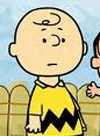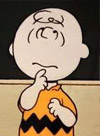AAMToolbox Documentation: Difference between revisions
No edit summary |
No edit summary |
||
| Line 32: | Line 32: | ||
#Create a point model template. Points are placed around the object of interest, i.e. around a face or leaf. The set of points constitute the '''point model'''. Every image will be marked up in the same way. | #Create a point model template. Points are placed around the object of interest, i.e. around a face or leaf. The set of points constitute the '''point model'''. Every image will be marked up in the same way. | ||
#*[[AAMToolbox template|Tutorial on point model template.]] | #*[[AAMToolbox template|Tutorial on point model template.]] | ||
#Move the points to the corresponding positions in each image in turn. The positions must correspond to the | #Move the points to the corresponding positions in each image in turn. The positions must'' '''correspond''' to the same material points'' in each image, i.e. the tip of the leaf, the corner of an eye, or halfway along a line between the two ends of the mouth. | ||
#*[[AAMToolbox point model editor|Tutorial on point model editor.]] | #*[[AAMToolbox point model editor|Tutorial on point model editor.]] | ||
#Generate the shape model using principal component analysis (PCA) | #Generate the shape model using principal component analysis (PCA) | ||
Revision as of 10:56, 1 February 2012
Tutorials on the Shape modelling toolbox
The models shown in these tutorials illustrate features of the AAMToolbox software. They are not designed to understand the shape and appearance modelling which is better done from the published literature for example.
Viewing these pages. Some versions of Firefox and Explorer do not create satisfactory prints even though you can view the pages with no problems. Chrome does appear to produce good printouts.
Three ways to use AAMToolbox
1) Analysing shapes. i.e. the arrangement of points around a shape
2) Comparing shapes from samples of different groups for example, comparing faces from different cartoon characters
3) Analysing shape and appearance. In addition to the points around a shape, analyse the appearance (grey scale or colour) within the shape.
4) Analysing 3D shapes
1 Analysing 2D shapes using the Graphical User Interface
How to use the tutorial. First download and install the AAMToolbox. A zip file containing the project (PRJ_CartoonFaces) is available here. Download and unzip into a directory. Then, from Matlab, change directory into the project
cd PRJ_CartoonFaces
This project contains
- a set of faces
The process of analysing a set of images is:-
|
<wikiflv width="300" height="300" logo="false" loop="true" background="white">ShapeVectorWalkShowShape-21-Jun-2011-14-28-24 VD.flv|ShapeVectorWalkShowShape-21-Jun-2011-14-28-24 VD_First.png</wikiflv> |







